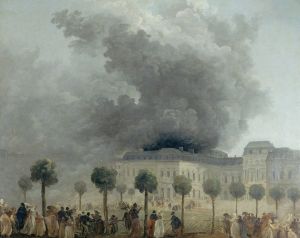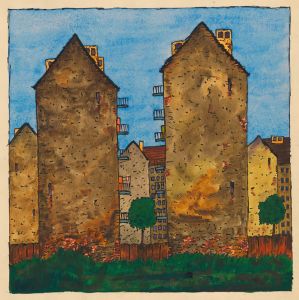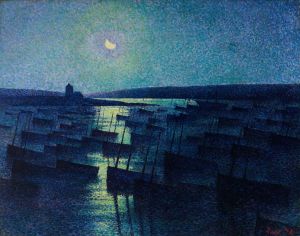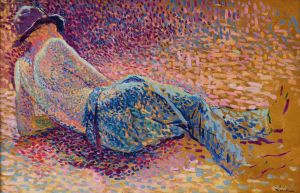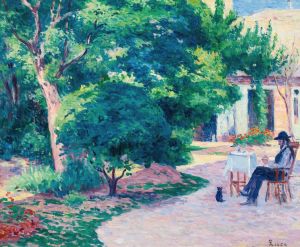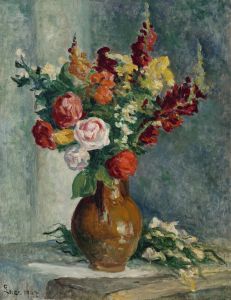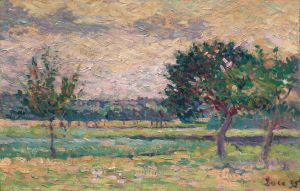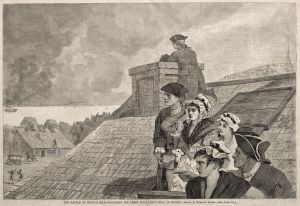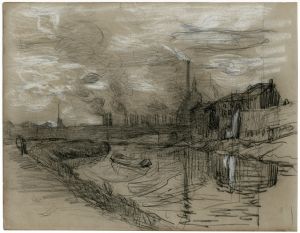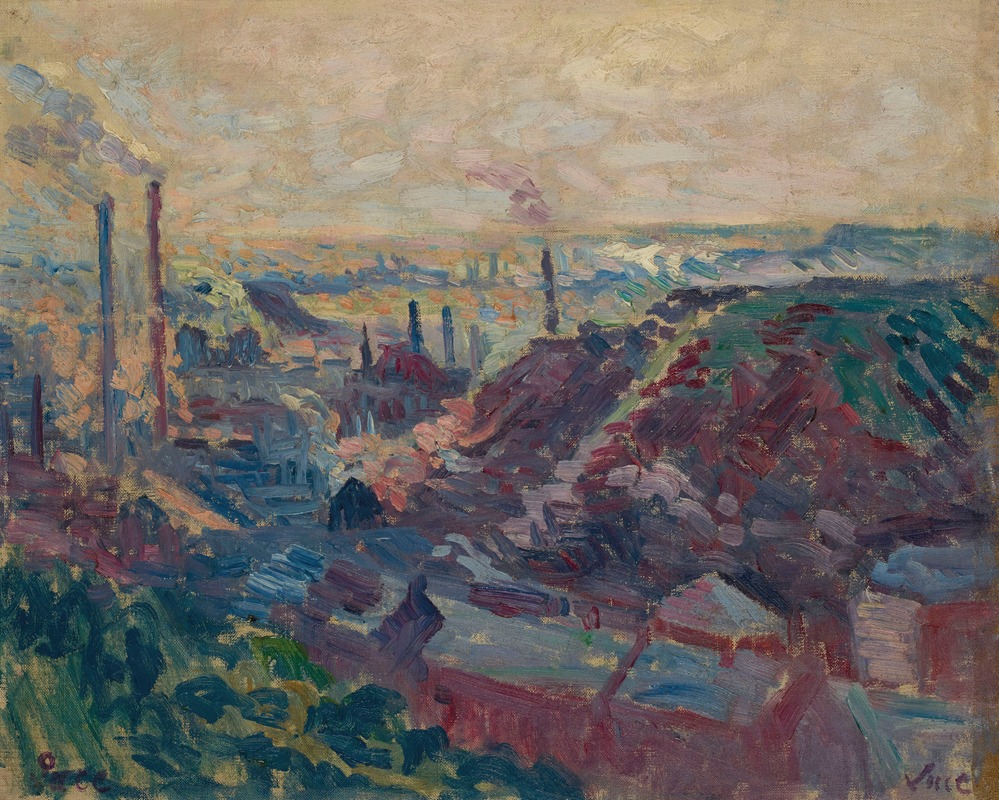
La Vallée Industrielle de la Sambre
A hand-painted replica of Maximilien Luce’s masterpiece La Vallée Industrielle de la Sambre, meticulously crafted by professional artists to capture the true essence of the original. Each piece is created with museum-quality canvas and rare mineral pigments, carefully painted by experienced artists with delicate brushstrokes and rich, layered colors to perfectly recreate the texture of the original artwork. Unlike machine-printed reproductions, this hand-painted version brings the painting to life, infused with the artist’s emotions and skill in every stroke. Whether for personal collection or home decoration, it instantly elevates the artistic atmosphere of any space.
Maximilien Luce's painting La Vallée Industrielle de la Sambre (The Industrial Valley of the Sambre) is a notable example of the artist's work, reflecting his interest in industrial landscapes and the social realities of his time. Luce (1858–1941) was a French Neo-Impressionist painter, engraver, and anarchist, known for his contributions to the Pointillist technique and his depictions of urban and rural life during the late 19th and early 20th centuries.
This painting captures the industrialized region along the Sambre River, which flows through northern France and Belgium. During the late 19th century, the Sambre Valley was a hub of industrial activity, characterized by factories, steel mills, and coal mines. Luce's work often focused on such settings, portraying the impact of industrialization on both the landscape and the people who lived and worked in these areas. His paintings frequently juxtaposed the beauty of natural environments with the stark, mechanical presence of industrial structures.
In La Vallée Industrielle de la Sambre, Luce employs the Pointillist technique, a method of painting developed by Georges Seurat and Paul Signac, in which small, distinct dots of color are applied to the canvas to create an image. This technique allows for a vibrant interplay of light and color, which is evident in Luce's depiction of the industrial valley. The painting likely features elements such as smokestacks, factories, and the river itself, though specific details about the composition are not widely documented.
Luce's interest in industrial scenes was closely tied to his political beliefs. As an anarchist, he was deeply concerned with the lives of the working class and sought to highlight their struggles through his art. His works often serve as a visual record of the social and economic transformations brought about by industrialization in France during this period.
While La Vallée Industrielle de la Sambre is not as widely known as some of Luce's other works, it remains an important piece within his oeuvre, illustrating his commitment to capturing the realities of modern life. The painting is a testament to Luce's ability to blend artistic innovation with social commentary, making him a significant figure in the Neo-Impressionist movement.
Further details about the painting, such as its current location or the exact year of its creation, are not readily available in public records.





